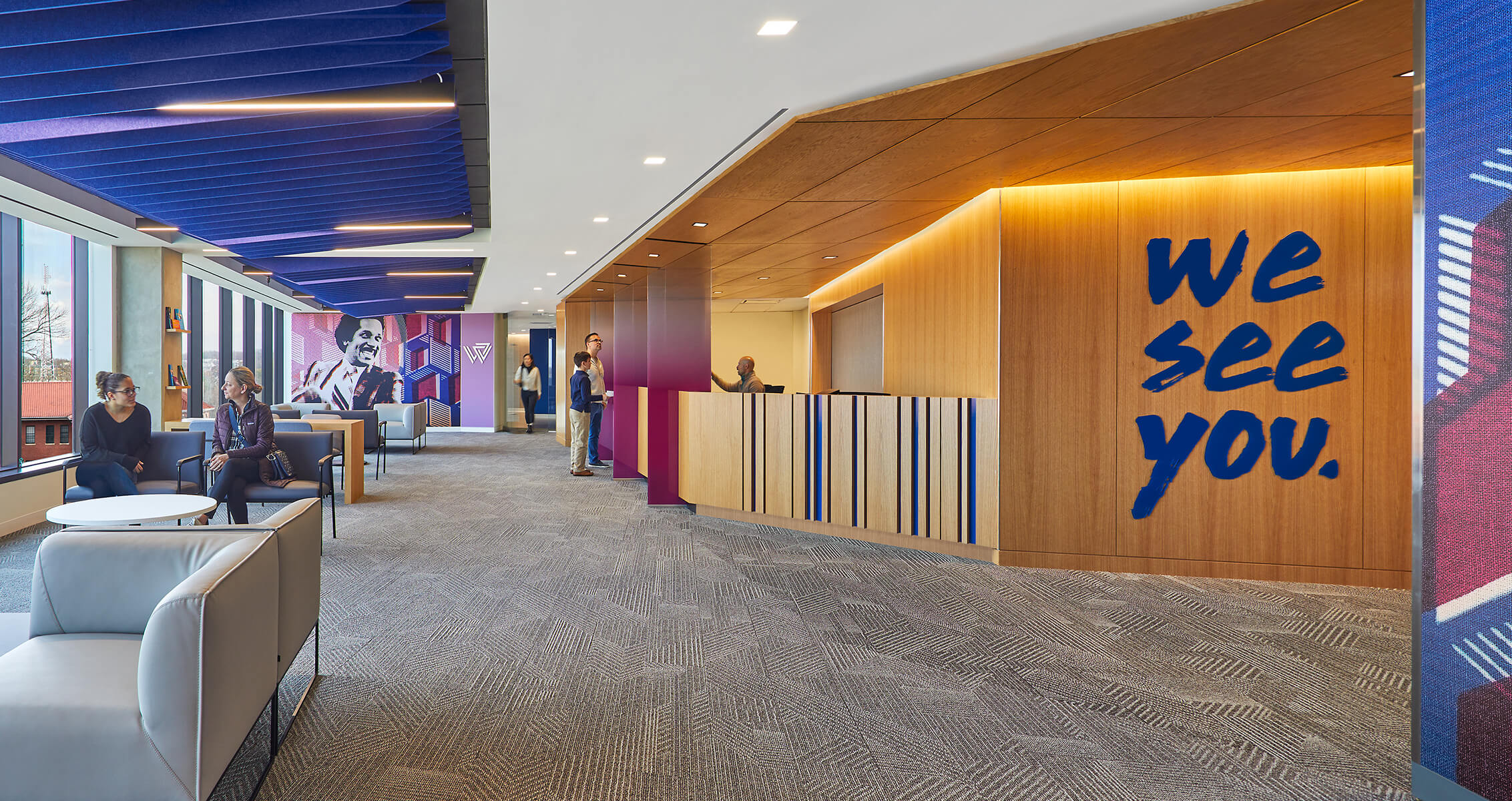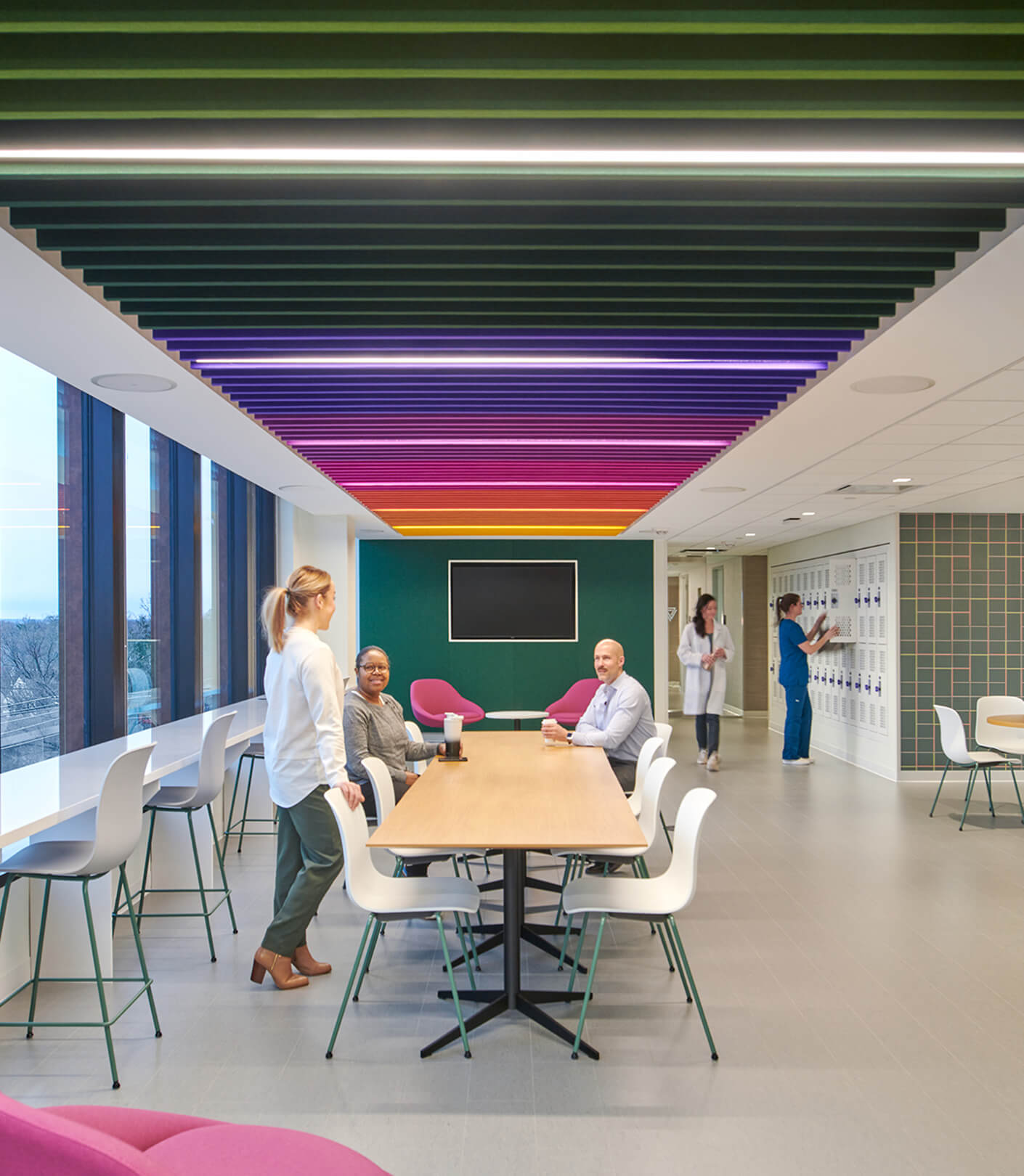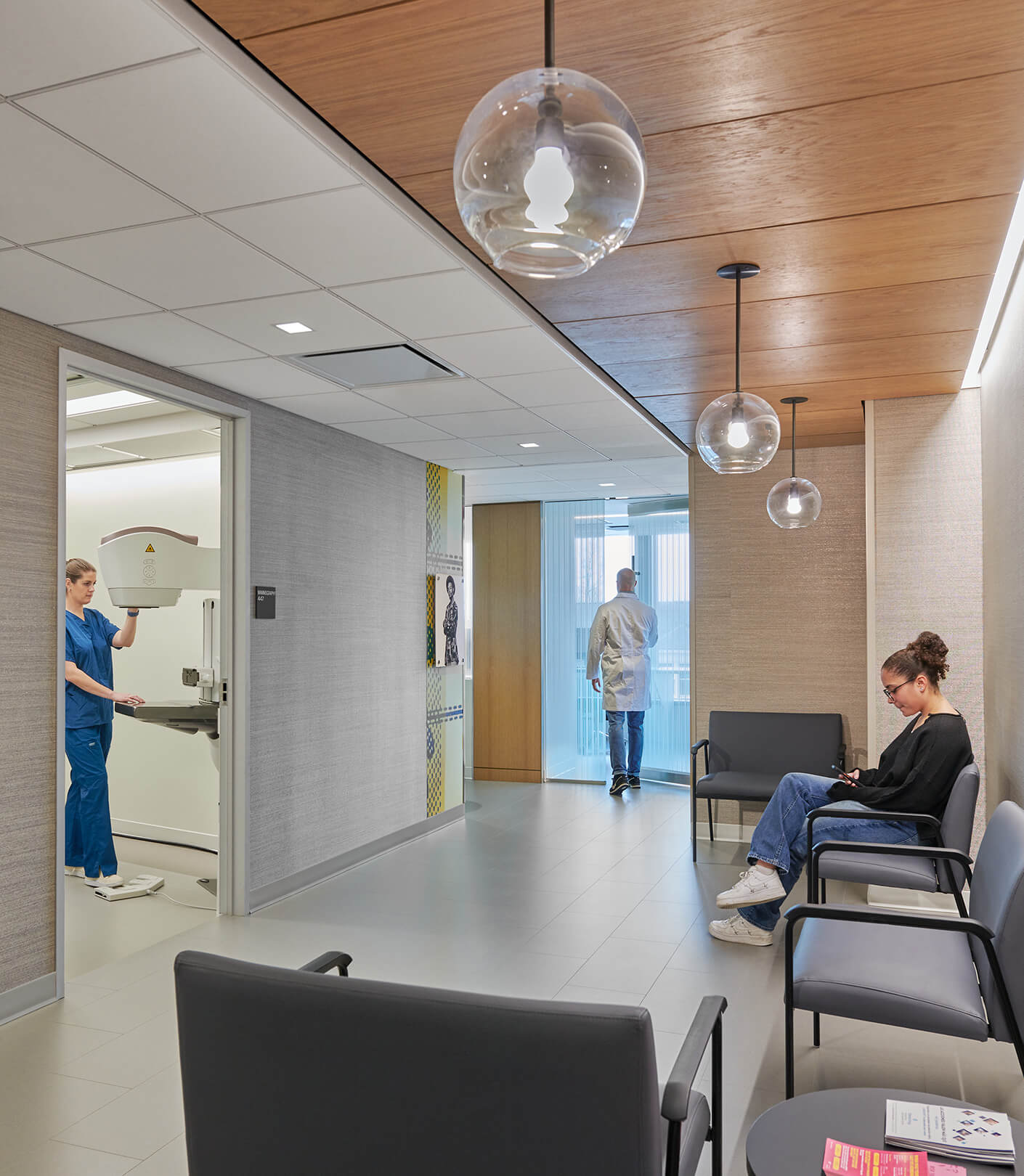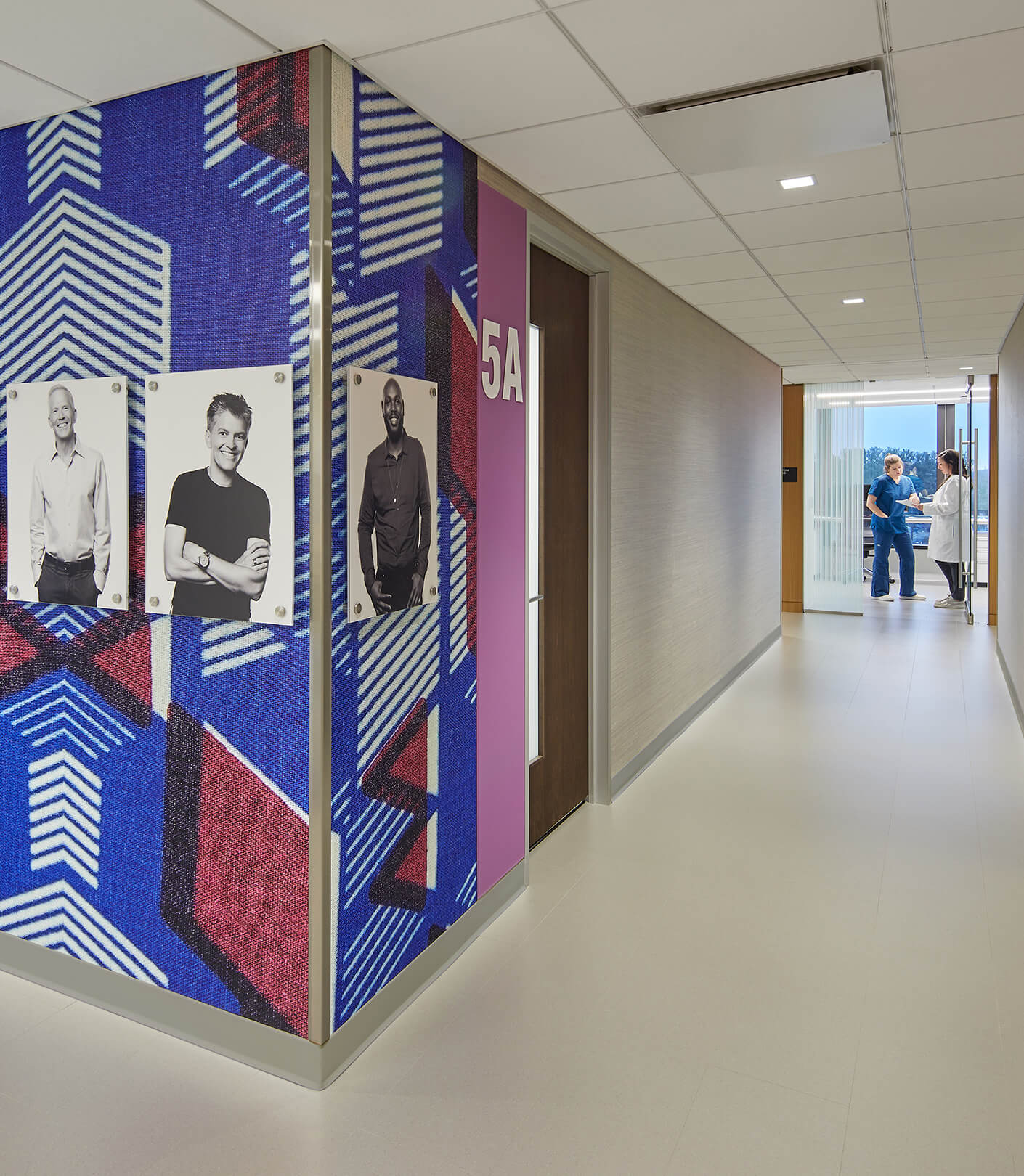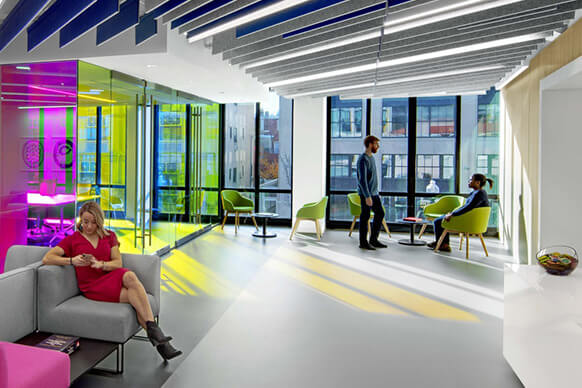WASHINGTON, D.C. — Patients and staff at the recently opened Max Robinson Center—a five-story health care and research facility for Whitman-Walker, designed by Perkins&Will—are reporting feelings of belonging and enhanced well-being as a result of their experiences there. Whitman-Walker is a nonprofit that has provided relief for persistent health disparities and service delivery inequities in Washington, D.C. for the last 50 years. The Max Robinson Center, which opened in August 2023, was designed specifically to expand care capabilities and support health equity in Wards 7 and 8.
“From the outset of the project, Whitman-Walker wanted a facility that reflected a seamless and integrated service of care, incorporated a plan for flexibility and resilience, and celebrated their diverse patients, providers, and staff,” says Nancy Gribeluk, the Managing Principal from Perkins&Will. “The positive response to the Max Robinson Center underscores the need for more community health facilities that address inclusivity and prioritize patient well-being.”
The Max Robinson Center is Perkins&Will’s third project with the nonprofit. Its design takes inspiration from Whitman-Walker’s commitment to the communities they serve, reflected in their motto, “We See You.” To the LGBTQ+, minority, and at-risk patients that receive lifesaving care and support services there, Whitman-Walker is a safe place of acceptance. To honor the positive impact Whitman-Walker embodies, the Max Robinson Center creates flexible spaces that provide ease, security, and dignity for practitioners, staff, and patients.
Design That Expands Care
In 2023, Whitman-Walker served approximately 18,000 patients and provided care around the D.C. community through more than 132,000 unique visits. Since opening last fall, Whitman-Walker’s patient volume is now 2.5x higher than what it had it its former (and smaller) Max Robinson Center health facility in southeast D.C., and its percentage increase in clinical encounters is 145%. In April of 2024, they saw the most patients in the history of the Center, and the numbers keep rising month after month.
